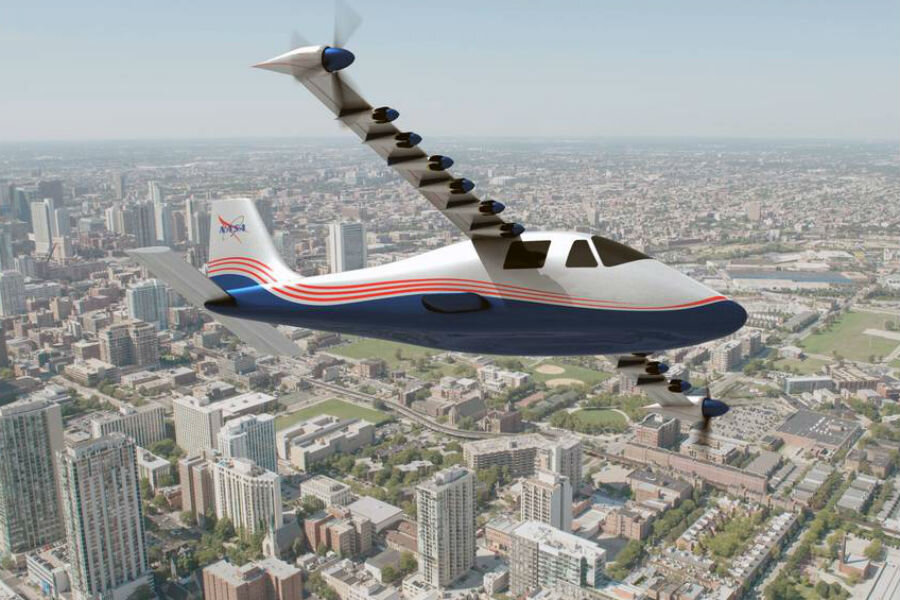Clean skies ahead? NASA unveils electric plane.
Loading...
NASA just released designs for a plane that will test cutting-edge, zero-emission airplane propulsion technology. Scientists with the space agency say they hope their designs will accelerate innovation of more efficient and environmentally friendly aircrafts amid market pressures and government regulators that all point in the same direction: Airlines cannot continue to grow and pollute at current levels.
“The general aviation-sized X-57 will take the first step in opening a new era of aviation,” NASA Administrator Charles Bolden said when NASA unveiled plans for the zero-emission experimental plane on Friday.
NASA’s experimental plane X-57, nicknamed Maxwell, is expected to reduce fivefold the energy required for a private plane to cruise at 175 miles per hour. The single-seater plane is a sleeker version of the the four-seat, Tecnam P2006T plane, called the Sceptor, replacing the plane’s twin gas-fueled engines and wings with fourteen electric motors spread across much skinnier wings.
During cruise flight, the plane will be powered by the two electric motors at its wingtips that spin five-foot propellers. During takeoff and landing, Maxwell will also rely on 12 smaller motors along the leading edge of the wings that power two-foot propellers, which fold away during flight.
Maxwell is the first of five demonstration vehicles NASA plans to design, build, and fly as part of the 10-year New Aviation Horizons initiative, which will showcase technologies that reduce airplane’s fuel consumption. Maxwell has room for one pilot and can stay aloft for one hour, but the other environmentally conscious experimental planes NASA plans to roll out will be able to hold more passengers and cargo.
The global aviation industry is responsible for 2 percent of human-induced CO2 emissions, about the same as Germany's total emissions, and the industry’s CO2 emissions are predicted to triple by the middle of the century if flight volumes grow as anticipated. But the aviation industry hopes to counter this growth in emissions, and in February agreed to the first binding limits on carbon dioxide emissions.
Important strides toward fuel efficiency have previously been propelled by market forces. “Aircraft today are 70 percent more fuel efficient than the first commercial jets to enter service, which brings to mind that our sector has a built-in self-interest to lower fuel costs and reduce emissions,” International Civil Aviation Organization Council President Olumuyiwa Benard Aliu said at a conference in April.
Fuel accounts for 33 percent of airline operating costs, adding to the appeal of alternative energy sources, and government regulators are applying additional pressure. Airbus hopes to be selling passenger planes powered by hybrid engines by 2030, as CNN reported, and said it's been spurred to develop the technology by stricter European emission rules. Boeing is working on a concept that would use regular jet engines on takeoff and switch to electric power during the flight, according to The Wall Street Journal.
Electric airplanes aren’t just in the planning stages. Solar Impulse, a privately-financed solar-powered aircraft, completed a 5-day flight from Japan to Hawaii relying exclusively on solar power last summer, and is currently preparing for a comparable 5-day flight across the Atlantic as the next leg in the effort to be the first round-the-world solar flight, with no fuel and zero emissions.






